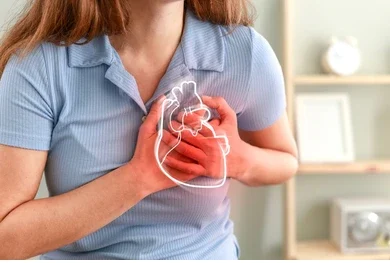A growing body of research from the Cleveland Clinic is challenging the traditional understanding of heart attack symptoms, highlighting a dangerous gender gap in detection and diagnosis. The findings reveal that women frequently experience symptoms that differ significantly from those observed in men, often leading to misdiagnosis, delayed care, and poorer outcomes.
While chest pain remains the most commonly reported symptom across both sexes, women are considerably more likely to report atypical symptoms—many of which are subtle and easily mistaken for non-cardiac issues like stress or indigestion.
Common Atypical Heart Attack Symptoms in Women:
- Persistent, unexplained fatigue
- Nausea or vomiting
- Shortness of breath, even without exertion
- Dizziness or light-headedness
- Discomfort or pain in the jaw, neck, or upper back
- A sense of anxiety or unease
- Sweating without physical exertion
- Mild chest discomfort that comes and goes
“These symptoms may not align with the traditional image of a heart attack—crushing chest pain radiating down the left arm—which is why they’re often ignored or misattributed,” explained Dr. Leslie Cho, Director of the Cleveland Clinic’s Women’s Cardiovascular Center.
A Silent Threat
The study also notes that women are more prone to experiencing “silent heart attacks”—events with few or no recognizable symptoms that still result in serious cardiac damage. These can go unnoticed until routine exams or complications arise later.
According to the data, women are statistically more likely than men to die within five years of a heart attack, in part due to misdiagnosis or delays in receiving critical care.
Why Are Women’s Symptoms Different?
Medical experts point to several biological and hormonal factors:
- Smaller coronary arteries in women can affect blood flow and complicate diagnosis, even when blockages aren’t clearly visible.
- Hormonal changes, especially post-menopause, impact cardiovascular health and may influence how symptoms manifest.
- Differences in heart structure and plaque behavior between men and women also affect how symptoms present.
Changing the Narrative
The Cleveland Clinic’s findings are part of a broader push to reshape how cardiovascular disease is assessed and treated in women. Public health campaigns and diagnostic guidelines have historically focused on male-centric symptoms, leading to systemic blind spots.
“Recognizing these differences isn’t just a matter of education—it’s a matter of saving lives,” said Dr. Cho. “This is not just a women’s issue, it’s a healthcare systems issue.”
A Call to Action
Cardiovascular disease remains the leading cause of death among women globally. Yet studies show women are:
- Less likely to undergo cardiac testing
- Less frequently prescribed life-saving medications
- Less often referred for interventional procedures
Experts urge women to be proactive—understand their risk, recognize non-traditional symptoms, and seek timely medical attention, even if signs seem mild or unusual.


